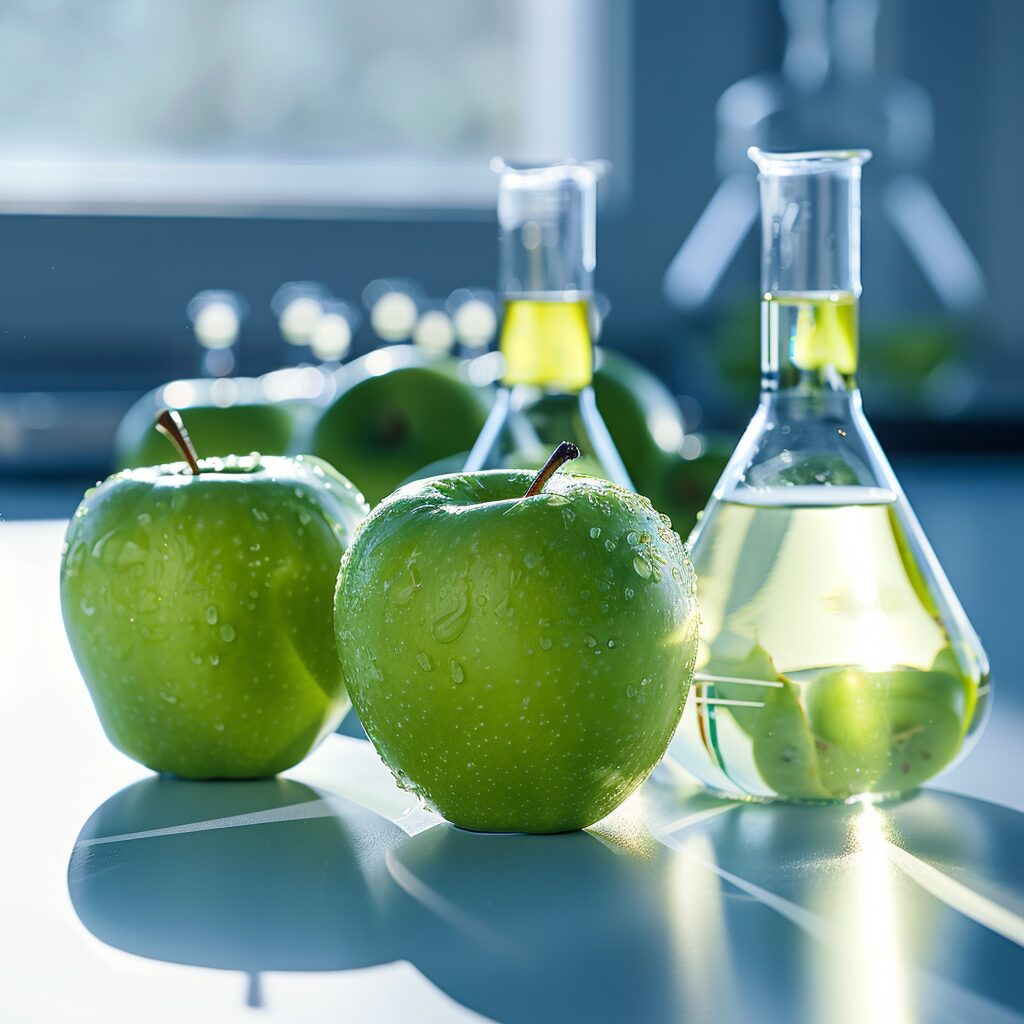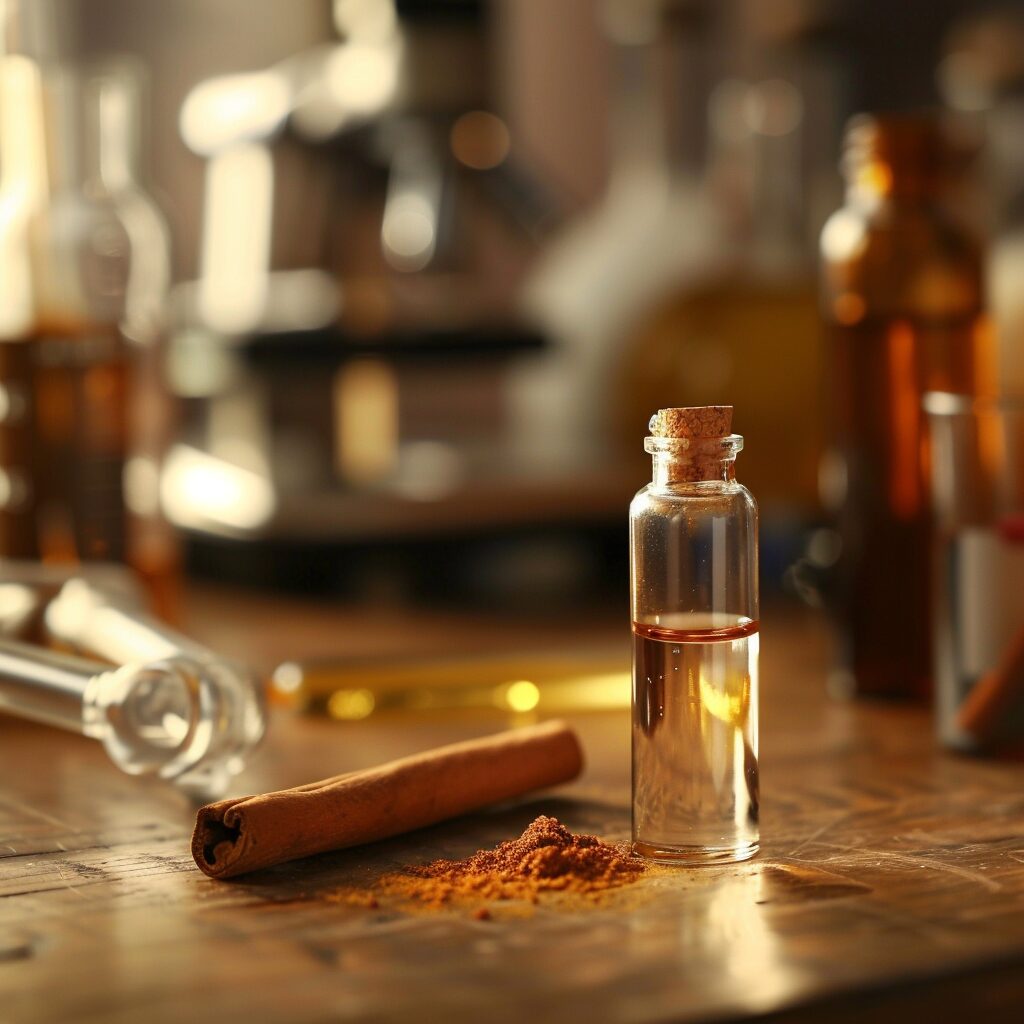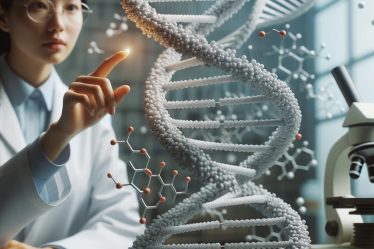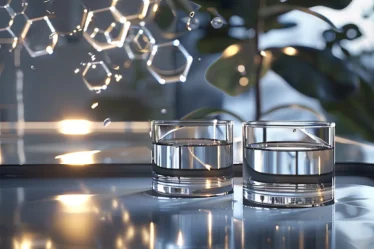
Did you know that aldehydes are responsible for the distinctive smell of almonds? They are also preservatives found in many products.
Due to their characteristic structure and reactivity, aldehydes such as acetic aldehyde and formaldehyde are used in flavourings, fragrances and even in important biological cycles.
Our study guide presents what makes aldehydes unique, including their structure, how they’re made, and their key physical properties. You’ll also learn about common reactions like oxidation and reduction.
Aldehyde: Quick Summary
Do you just need the basics? Here’s a simple explanation of what is an aldehyde:
🟠 Aldehyde is an organic compound with a carbonyl group attached to a hydrogen atom and an R-group.
🟠 Formaldehyde is widely used in preservatives and disinfectants and is one of the most common aldehydes.
🟠 Acetic acid aldehyde (acetaldehyde) is produced industrially for use in acetic acid and various other compounds.
🟠 Aldehyde reactions involve oxidation to form carboxylic acids and reduction to create primary alcohols.
🟠 Naming aldehydes follows the IUPAC system, replacing the -e in alkanes with -al, as in “ethanal.”
🟠 Physical properties of aldehydes cover moderate boiling points, limited water solubility, and distinct odors, especially in smaller molecules.
Struggling with acetic aldehyde, formaldehyde, and other aldehydes? Don’t worry. A tutor can explain it in a way that clicks for you. You can also find more useful topics in our Chemistry blogs.
What Are Aldehydes?
Aldehydes are organic compounds characterized by a carbonyl group ($C=O$) attached to a hydrogen atom and an R-group. The R-group can vary from a single hydrogen atom to complex carbon chains, providing aldehydes with a broad range of chemical properties and applications.
The structure of aldehydes is often represented as $R−CH=O$, highlighting their distinctive reactivity. In these compounds, the carbonyl group is partially polar, where the carbon atom has a slight positive charge, and the oxygen atom has a slight negative charge. This polarity influences how aldehydes interact with other substances.
Some common examples of aldehydes include acetaldehyde (acetic acid aldehyde), frequently used in industrial settings, and formaldehyde, which is widely known as a preservative in biological specimens.
The Structure of Aldehydes
The carbon in an aldehyde’s carbonyl group is sp² hybridized, leading to a planar structure with bond angles close to 120°. This structural arrangement gives aldehydes a unique geometry that influences their chemical behavior and interactions.
In aldehydes, the carbonyl carbon is bonded to a hydrogen and an R-group, resulting in a molecule with distinct polarity. The oxygen in the carbonyl group is electron-rich, while the carbon is electron-poor, which affects how aldehydes react with other compounds.
Formaldehyde ($H−CH=O$) is the simplest aldehyde, with only hydrogen atoms attached to the carbonyl carbon. This simplicity makes formaldehyde highly reactive and widely used in chemical syntheses and as a preservative.
The polarity of aldehydes also plays a role in their boiling points, solubility, and reactivity, especially in interactions with nucleophiles in various chemical reactions.
Physical Properties of Aldehydes
Aldehydes have unique physical properties, primarily due to the polarity of their carbonyl group. This polarity creates a partial positive charge on the carbon and a partial negative charge on the oxygen, resulting in moderate boiling points. Aldehydes generally have higher boiling points than nonpolar compounds, such as alkanes, but lower than alcohols, which can form hydrogen bonds.
Smaller aldehydes, like formaldehyde and acetaldehyde, are water-soluble. This solubility is due to the polar carbonyl group, which allows interaction with water molecules. However, as the carbon chain lengthens, water solubility decreases due to the growing nonpolar hydrocarbon portion.
Many aldehydes, especially smaller ones, have strong and recognizable odors. Compounds like formaldehyde and acetic acid aldehyde have distinctive smells due to their volatility and molecular structure. These properties make aldehydes valuable in diverse applications, ranging from fragrances to solvents.
Physical Properties of Common Aldehydes
| Aldehyde | Boiling Point (°C) | Solubility in Water (g/100 mL) | Notable Characteristics |
| Formaldehyde | -19 | Completely soluble | Pungent odor, gas at room temp |
| Acetaldehyde | 20.2 | Completely soluble | Volatile, sharp odor |
| Propionaldehyde | 48 | Slightly soluble | Fruity odor, used in perfumery |
| Butyraldehyde | 75.7 | Slightly soluble | Pungent, solvent in resins |
| Benzaldehyde | 178 | Insoluble | Almond-like scent, used in flavoring |
Synthesis of Aldehydes
Aldehydes can be synthesized through several key methods, each tailored to different starting materials and conditions. One widely used industrial technique is hydroformylation, where alkenes react with carbon monoxide and hydrogen gas in the presence of a catalyst, often cobalt or rhodium. This reaction introduces a formyl group ($-CHO$) to the alkene, forming an aldehyde. For example, hydroformylation of propylene ($CH_3CH=CH_2$) yields butyraldehyde ($CH_3CH_2CH_2CHO$).
Another common method is the oxidation of primary alcohols. In this process, a primary alcohol like ethanol is oxidized to an aldehyde, such as acetaldehyde, using reagents like pyridinium chlorochromate (PCC), which prevents further oxidation to a carboxylic acid.
A third approach involves the reduction of carboxylic acids or their derivatives, such as acyl chlorides, to aldehydes. This reduction is typically achieved with lithium tri-tert-butoxyaluminum hydride (LiAlH(OtBu)$_3$), a reagent that selectively reduces acyl chlorides to aldehydes without further converting them into alcohols.
Naming Aldehydes: Common and IUPAC Names
Aldehydes are named according to the IUPAC system, which provides a standardized approach for naming organic compounds. In this system, aldehydes are identified by selecting the longest carbon chain that includes the carbonyl group and replacing the -e ending of the corresponding alkane name with -al. For example, ethane becomes ethanal ($CH_3CHO$) when in its aldehyde form.
When aldehydes are part of more complex carbon structures, the suffix -carbaldehyde may be used, especially with rings, as in cyclohexanecarbaldehyde. This naming helps clarify the aldehyde’s structure within larger molecules.
Some aldehydes also have common names based on their origin or distinctive features. For instance, benzaldehyde ($C_6H_5CHO$) is named for its benzene ring, while acetaldehyde ($CH_3CHO$) is derived from acetic acid. This systematic approach facilitates clear communication in scientific and industrial settings by distinguishing the structures and sources of different aldehydes.
Naming Rules for Aldehydes
To name aldehydes, start by identifying the longest carbon chain that contains the carbonyl group. Replace the -e ending of the corresponding alkane with -al. Since the aldehyde carbon is always at the beginning of the chain (carbon 1), there is no need to number its position.
For ring structures, the suffix -carbaldehyde is used. For example, benzene carbaldehyde is the IUPAC name for benzaldehyde. Familiar examples include methanal (also known as formaldehyde) for a single-carbon aldehyde and propanal for a three-carbon chain, following a consistent approach across various structures.
Chemical Reactions Involving Aldehydes
Aldehydes participate in a variety of reactions, including oxidation, reduction, and nucleophilic addition, making them useful in both industrial and laboratory settings. One well-known test for aldehydes is the Tollens reagent test, a silver-based solution that produces a shiny silver mirror upon reacting with an aldehyde. This reaction distinguishes aldehydes from ketones, as only aldehydes will oxidize under these conditions.
The Cannizzaro reaction is another significant reaction involving aldehydes, especially non-enolizable ones (those lacking hydrogen on the carbon adjacent to the carbonyl group). In a strong base, such aldehydes undergo disproportionation, resulting in a primary alcohol and a carboxylate ion. This reaction commonly occurs with formaldehyde and benzaldehyde.
In industrial applications, aldehydes are often oxidized to carboxylic acids, an essential step in producing acids like acetic acid from acetaldehyde. Laboratory syntheses, however, carefully control conditions to avoid over-oxidation, especially when specific aldehyde derivatives are required. Aldehydes are also reduced to primary alcohols via hydrogenation, making them crucial intermediates in alcohol production.
Nucleophilic addition is another key reaction for aldehydes, enabling the formation of various compounds. In this process, a nucleophile attacks the carbonyl carbon, resulting in an addition product. Common nucleophiles include cyanide ions, which form cyanohydrins, and Grignard reagents, which add carbon chains to aldehydes, leading to more complex molecules. These reactions make aldehydes indispensable building blocks in organic chemistry, aiding in the synthesis of larger organic structures.
Oxidation of Aldehydes
Aldehydes readily oxidize to form carboxylic acids using oxidizing agents such as potassium permanganate ($KMnO_4$), chromium trioxide ($CrO_3$), or even atmospheric oxygen. During this reaction, the aldehyde ($R-CHO$) converts into a carboxylic acid ($R-COOH$) as the carbonyl group gains oxygen. This process can occur spontaneously with air exposure, which is why aldehydes are often stored in airtight containers. Industrially, this oxidation is essential for producing acids like acetic acid, widely used in food and chemical industries.
Reduction of Aldehydes
Reduction transforms aldehydes into primary alcohols through hydrogenation, where hydrogen atoms add to the carbonyl group. This reaction can be catalyzed by metals such as palladium or platinum in a hydrogen atmosphere. In laboratory settings, reducing agents like sodium borohydride ($NaBH_4$) or lithium aluminum hydride ($LiAlH_4$) are often used. For instance, acetaldehyde ($CH_3CHO$) reduces to ethanol ($CH_3CH_2OH$), which is widely employed in industrial and laboratory applications. This reduction provides a direct route for synthesizing alcohols from aldehydes.
Nucleophilic Addition Reactions
Nucleophilic addition is a fundamental reaction for aldehydes, where nucleophiles attach to the carbonyl carbon, exploiting its partial positive charge. This reaction allows aldehydes to form a wide range of compounds. For example, when a cyanide ion ($CN^-$) reacts with an aldehyde, it forms a cyanohydrin, which serves as an intermediate in producing certain acids and amino acids. Grignard reagents ($RMgX$), containing magnesium and an organic group, also add to aldehydes, producing secondary alcohols after acid workup. This reaction is especially valuable in synthetic organic chemistry, allowing for carbon chain extension—a crucial method in creating pharmaceuticals and polymers.
Uses of Aldehydes
Aldehydes serve varied roles across different industries and applications. Here’s a straightforward look at some of the most common uses:
- Formaldehyde: This compound is essential in preserving biological specimens and sterilizing medical tools. It also plays a role in creating resins used in adhesives and finishes.
- Benzaldehyde: Recognized for its almond-like scent, benzaldehyde is widely used in flavorings, fragrances, and even cosmetics.
- Cinnamaldehyde and Vanillin: Found in cinnamon and vanilla, these aldehydes contribute to flavors and scents in food, perfumes, and personal care items.
- Glutaraldehyde: In healthcare, glutaraldehyde is a high-level disinfectant for sterilizing medical equipment.
- Industrial Building Blocks: Aldehydes are key starting materials for producing dyes, plastics, and pharmaceuticals, making them crucial in chemical manufacturing.
Advance Your Knowledge in Aldehydes
Are naming aldehydes and aldehyde reactions tricky for you? A qualified chemistry instructor can explain complex topics in a way that makes sense to you, making organic and inorganic chemistry understandable and enjoyable.
Search for a tutor using phrases like “chemistry tutor Edinburgh” or “chemistry teacher Liverpool” on platforms like meet’n’learn. You’ll find someone who can tailor lessons to your needs.
If you prefer learning in a group, search for “chemistry classes Leeds” or “chemistry lessons London” online. The search will lead you to chemistry tutoring nearby.
Aldehydes: Frequently Asked Questions
1. What is an aldehyde?
An aldehyde is an organic compound with a carbonyl group ($C=O$) attached to a hydrogen atom and an R-group.
2. How are aldehydes different from ketones?
Aldehydes have a carbonyl group attached to hydrogen, while ketones have it attached to two carbon groups.
3. What are the uses of formaldehyde?
Formaldehyde is used as a preservative and disinfectant and in the production of resins and plastics.
4. How are aldehydes named in the IUPAC system?
In IUPAC naming, aldehydes replace the -e ending of the parent alkane with -al.
5. What is acetic acid aldehyde?
Acetic acid aldehyde, or acetaldehyde, is a simple aldehyde used to produce acetic acid and other chemicals.
6. How do you identify aldehydes in a laboratory?
The silver mirror test can identify aldehydes with Tollens’ reagent or their distinct IR and NMR signals.
7. What happens when aldehydes undergo oxidation?
Aldehydes oxidize to form carboxylic acids, especially when exposed to strong oxidizing agents.
8. Why do some aldehydes have strong odors?
Due to their molecular structure, many aldehydes, particularly smaller ones, are volatile and produce strong, often pungent smells.
Sources:
1. LibreTexts Chemistry
2. Britannica
3. Wikipedia



